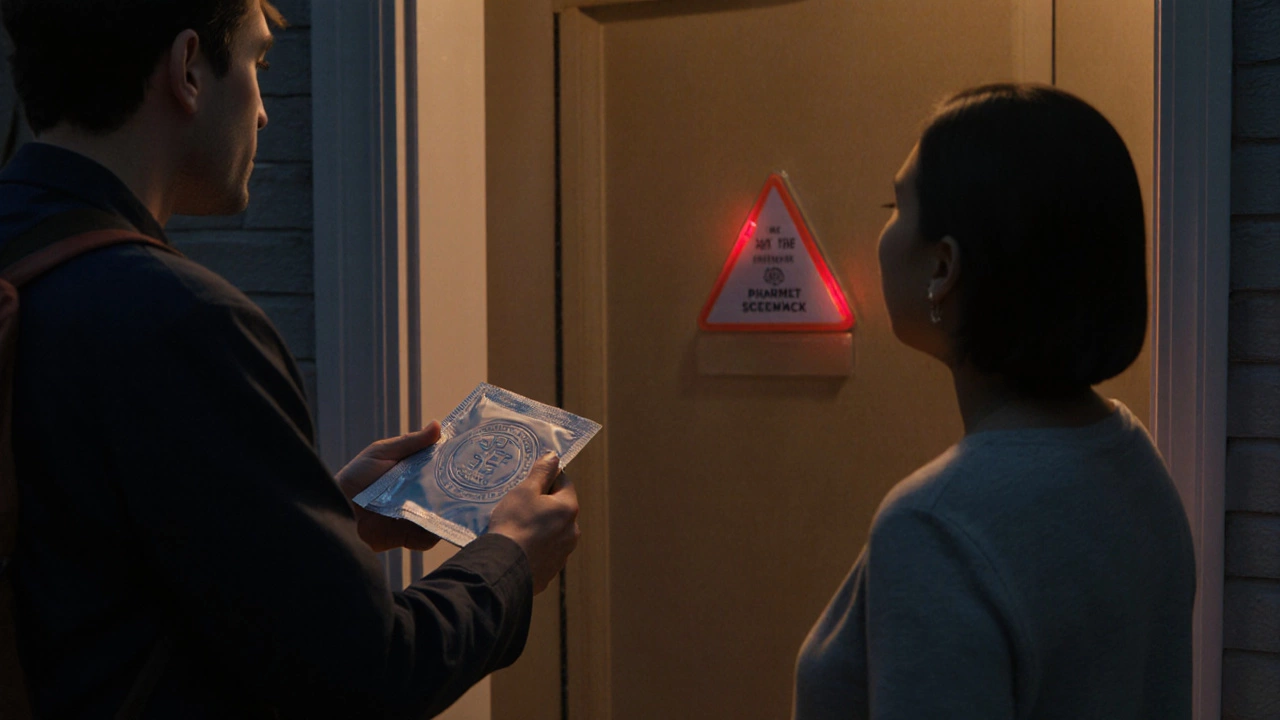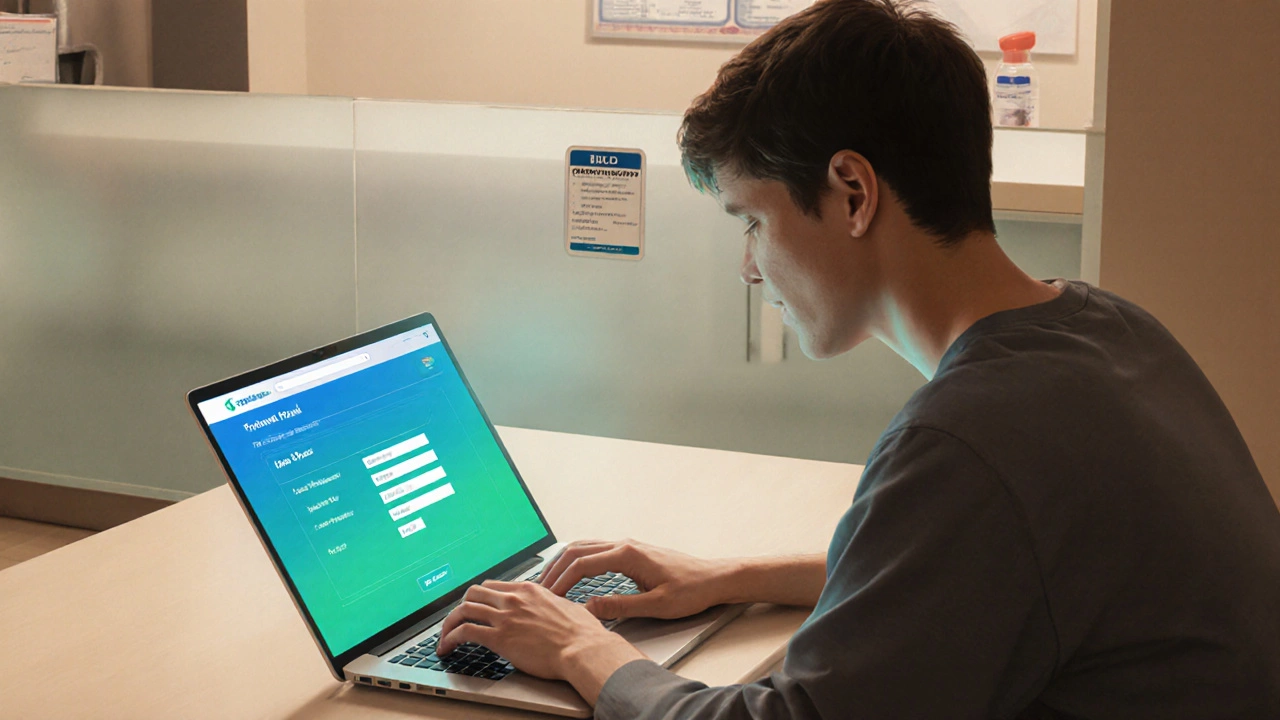Prescription Eligibility Checker
Is Your Prescription Eligible for Online Treatment?
Answer these questions to determine if you can get a prescription without seeing a doctor in person.
Eligible for Online Prescription
You may be eligible for an online prescription without an in-person doctor visit. This service will require a licensed health professional to review your information and confirm the prescription before it's sent to a licensed pharmacy.
Not Eligible for Online Prescription
You may need an in-person medical exam before getting a prescription. This is required for conditions that need physical assessment or when prescribing controlled substances.
When you search for a quick fix for a lingering headache or a repeat prescription, the idea of online prescription without any doctor visit feels tempting. But does it actually work, and is it safe? Let’s break it down in plain language, step by step, so you know what’s real and what’s risky.
How an Online Prescription Actually Works
First, understand the flow. Most legitimate services operate on a simple three‑step model:
- Enter your health information into a secure patient portalAn online interface where users submit medical history and symptoms.
- A licensed pharmacistA health professional qualified to review prescriptions and dispense medication reviews the data. If needed, a certified telehealth providerA healthcare professional who consults patients via video, phone, or chat may be brought in for a brief virtual exam.
- After approval, the prescription is sent through e‑prescribingElectronic transmission of a prescription from a prescriber to a pharmacy to an accredited online pharmacyA licensed digital platform that dispenses medication to consumer addresses. The meds arrive at your door, usually within a few days.
Notice there’s always a health professional involved, even if you never meet them in person. That’s the key difference between a genuine online prescription and a shady “no‑doctor” service.
Legal Landscape: Who’s Regulating What?
In the United States, three main bodies set the rules:
- FDAU.S. Food and Drug Administration, oversees drug safety and labeling approves which medicines can be sold online.
- DEADrug Enforcement Administration, controls distribution of narcotics and other controlled substances limits any prescription that contains Schedule II‑V drugs.
- Each state’s state regulationsLaws that dictate how telemedicine and e‑prescribing can be practiced locally may add extra steps, like requiring an in‑person visit for certain conditions.
If a service bypasses any of these checkpoints, it’s operating illegally, and you could be at risk of receiving counterfeit medication or violating the law.
Safety Checks Built Into Legit Services
What protects you when you get a prescription online?
- Verified credentials: The pharmacist and telehealth provider must hold valid licenses in the state where you reside. Reputable sites list these openly.
- Drug interaction screening: The system cross‑checks your current meds, allergies, and medical history before approving any new drug.
- Secure data handling: HIPAA‑compliant portals encrypt your information, keeping it safe from hackers.
- Clear labeling: The FDA requires that the pharmacy include a full medication guide and a pharmacist‑generated counseling note.
If any of these steps are missing, that’s a red flag.
When a Doctor’s Physical Exam Is Still Required
Not every prescription can be issued virtually. Here are common scenarios where a live exam is mandatory:
- Controlled substancesMedications classified by the DEA as having potential for abuse, such as opioids, stimulants, or certain anxiety meds.
- Diagnoses that rely on physical findings-skin rashes needing a biopsy, heart murmurs, or joint instability.
- New patients with no prior medical record; most telehealth platforms require at least one in‑person visit for a baseline evaluation.
- Complex chronic conditions where multiple specialists coordinate care (e.g., uncontrolled diabetes with kidney involvement).
In those cases, the platform will either schedule an in‑person consult at a partner clinic or refer you to a local provider.
Pros and Cons: Quick Comparison
| Aspect | Online (no in‑person doctor) | Traditional |
|---|---|---|
| Need for physical exam | Usually not required unless a controlled substance | Always required for new diagnoses |
| Turnaround time | Hours to a few days | 1‑2 weeks for appointment + pharmacy |
| Cost | Often lower; some platforms charge a flat consultation fee ($10‑$30) | Higher; office visit + insurance co‑pay |
| Safety checks | Automated drug‑interaction screen; pharmacist review | Physician exam + pharmacist review |
| Legal risk | High if service is unregulated | Low; regulated by state medical boards |
How to Choose a Legit Online Pharmacy
Follow this short checklist before you click “order”:
- Verify the site displays a physical address and a valid pharmacy licenseCertification from the state board of pharmacy confirming legal operation.
- Look for a clearly listed licensed pharmacistProfessional who signs off on every prescription name and contact.
- Check for DEA registration if the site offers any scheduled drugs.
- Read independent reviews; avoid sites that promise “no doctor needed” for all meds.
- Confirm the portal uses HIPAA encryptionSecurity standard protecting health information for data transmission.
If any of these points are missing, walk away. The cheapest option is often the most dangerous.

Common Pitfalls and Red Flags
Even if a site looks polished, watch out for these warning signs:
- “Buy without prescription” headlines - legit pharmacies never bypass a prescriber.
- Prices that are dramatically lower than nationwide averages - could indicate counterfeit meds.
- Requests for payment via crypto or obscure payment gateways - legitimate pharmacies use credit cards or verified insurance billing.
- Lack of a clear privacy policy or vague “terms of service” - may mean your data is sold.
- Absence of a pharmacist consultation step - the process should always involve a qualified professional.
Bottom Line: Is It Possible?
Yes, you can get an online prescription without ever stepping into a doctor’s office, but only if the service follows the legal and safety framework outlined above. If a medication is classified as a controlled substance or requires a physical assessment, the system will either direct you to an in‑person provider or refuse the request.
When you pick a reputable, licensed online pharmacy, you’ll get the convenience of home delivery while retaining the safeguards that protect your health. Anything less is a gamble you shouldn’t take.
Frequently Asked Questions
Can I get an antibiotic without any doctor interaction?
Most reputable online pharmacies require a licensed professional to confirm the need for an antibiotic. They will ask about symptoms, allergies, and recent tests before issuing the prescription.
Are online prescriptions covered by insurance?
Many insurers reimburse telehealth visits and the resulting prescription if the provider is in‑network. Check your plan’s telemedicine benefits and ask the pharmacy if they bill insurance directly.
What should I do if I receive the wrong medication?
Contact the pharmacy’s customer service immediately. A licensed pharmacist must verify the error, arrange a return, and issue a corrected prescription if needed.
Is it safe to use foreign online pharmacies?
Generally, no. Drugs from unregulated overseas sources may be counterfeit, mislabeled, or unsafe. Stick with pharmacies that are licensed in your state or country.
How long does delivery usually take?
Standard shipping is 2‑5 business days for most U.S. locations. Some services offer expedited overnight delivery for an extra fee.
